Key takeaways
- Handmade paper crafts, like coaster-making, promote creativity and mindfulness through the tactile experience and slow, deliberate process.
- Gathering materials, especially colorful magazine clippings, is a key step that enhances the overall aesthetic and personal connection to the project.
- Embracing imperfections and taking time for thoughtful layouts can lead to unique designs that showcase character and individuality.
- Sealing coasters with varnish not only protects them but also enhances colors, transforming them into durable and visually appealing pieces.

Introduction to handmade paper crafts
There’s something truly special about handmade paper crafts, isn’t there? From the feel of the textured paper beneath your fingers to the endless possibilities you can create, this art form invites a unique sense of calm and creativity.
I remember the first time I folded a simple origami crane; it was surprisingly meditative and satisfying. Have you ever noticed how working with paper can slow down your busy mind and bring a little joy to an otherwise ordinary day?
Handmade paper crafts connect us to a tradition that’s both ancient and refreshingly hands-on. It’s not just about the end product—it’s about the process, the little imperfections, and the personal touch that no machine can replicate.
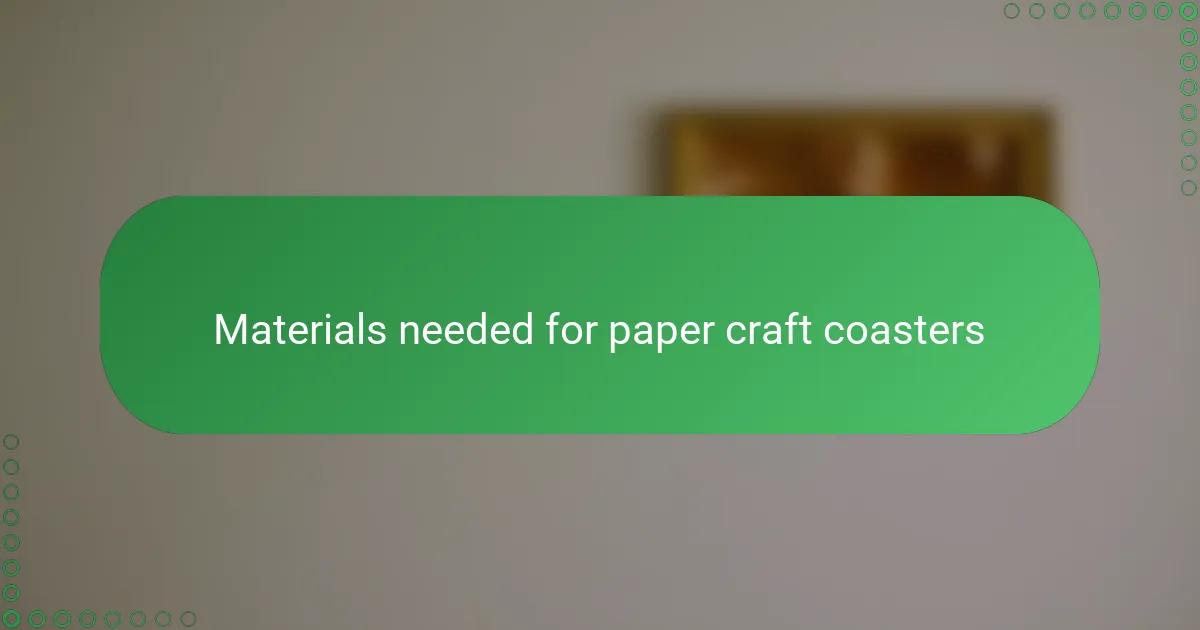
Materials needed for paper craft coasters
When I first set out to make coasters from magazine clippings, gathering the right materials felt like starting a small adventure. The essentials are surprisingly simple: sturdy cardstock or thick paper to form the base, colorful magazine pages full of vibrant images, and a good pair of scissors to cut out your favorite designs. Have you ever noticed how a stack of old magazines can suddenly seem like a treasure trove waiting to be explored?
I also found that a strong glue stick or decoupage medium is key to making those tiny clippings stick firmly without wrinkles or bubbles. It’s amazing how a bit of patience while applying glue can transform a random image into a piece of art that lasts. What’s your secret weapon when it comes to sticking things perfectly?
Finally, sealing your coaster with a clear varnish or waterproof spray is a step I learned the hard way—it protects your work from spills and makes the coasters more durable. I remember accidentally spilling a cup of tea right on my first batch, and that’s when I realized sealing is absolutely non-negotiable. Do you have a ritual to protect your handmade creations?
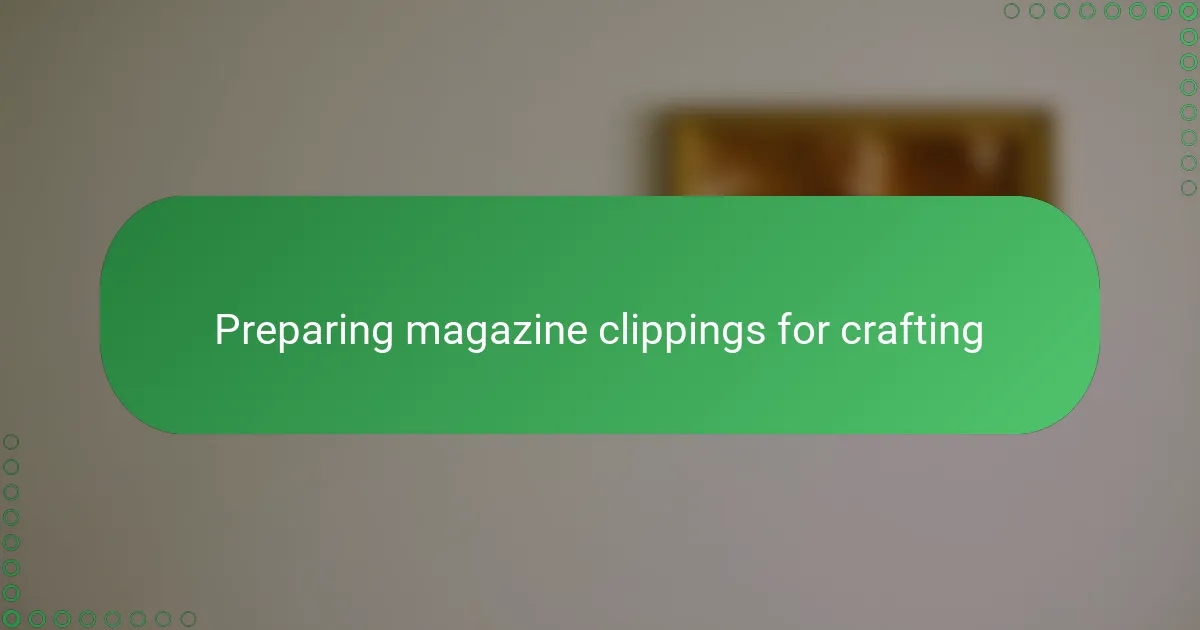
Preparing magazine clippings for crafting
Before diving into cutting out images, I always flip through magazines carefully, hunting for clippings that truly resonate with the vibe I want for my coasters. It’s a bit like a treasure hunt, isn’t it? Choosing the right colors and patterns sets the foundation, so I spend extra time here making sure each piece feels just right.
Once I’ve selected the perfect images, I take my time trimming them neatly, often with small, precise scissors to get clean edges. At first, I underestimated how much this simple step shapes the final look. Have you ever been surprised at how a slight curve or straight line can change the whole design’s energy?
I also make sure to smooth out any tiny wrinkles or folds after cutting—sometimes pressing the clippings under a heavy book helps. It might sound like a small detail, but keeping the paper flat and smooth really makes the gluing process easier and the coaster’s surface flawless. Don’t you find that little rituals like these turn crafting into a mindful, almost soothing experience?

Step by step coaster design process
Starting the coaster design, I lay out the base—thick cardstock that feels sturdy beneath my hands. Then I arrange the magazine clippings like puzzle pieces, moving them around until the composition just clicks. Have you ever found yourself shifting images back and forth, searching for that perfect balance between chaos and harmony?
Next comes the gluing, which I approach with patience and care. I apply a thin layer of glue on each clipping, smoothing it gently to avoid bubbles or wrinkles. I’ve learned over time that rushing this part always leads to frustration; isn’t it funny how a little patience transforms a messy pile into something beautiful?
Finally, once everything feels set, I seal the coaster with a clear varnish. This step is both protective and satisfying—watching the surface take on a subtle shine feels like giving the coaster a little armor. Have you noticed how this final layer somehow makes the design pop and feel truly finished?
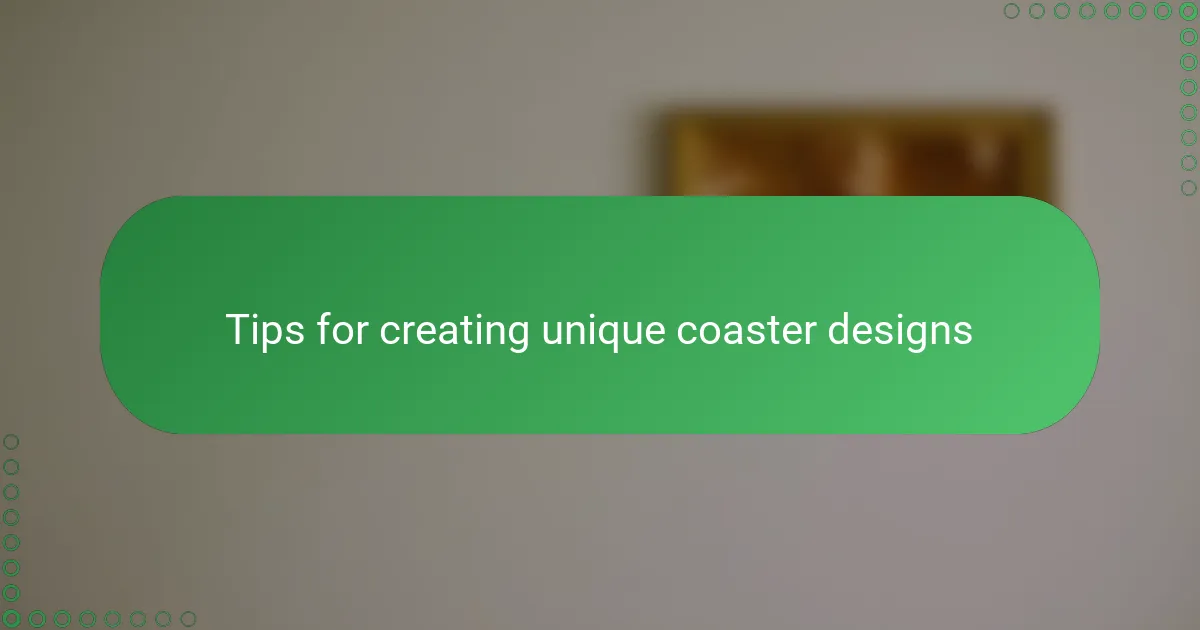
Tips for creating unique coaster designs
One tip I find invaluable is to embrace imperfection when arranging your clippings. Sometimes a slightly uneven edge or an unexpected overlap adds character and makes each coaster truly one-of-a-kind. Have you ever noticed how those little quirks can bring warmth and personality to your designs?
I also recommend mixing textures and colors thoughtfully—contrasting bold images with softer tones or glossy magazine pages with matte ones can create dynamic visual interest. When I experimented with layering shiny magazine photos over muted backgrounds, the effect felt surprisingly vibrant, almost like the coaster told a story.
Lastly, don’t rush the layout phase. I’ve spent sessions where I just rearranged pieces for what felt like forever, and that extra time paid off by revealing exciting new combinations I wouldn’t have seen in a hurry. Have you ever experienced that satisfying “aha” moment when everything suddenly clicks into place? That’s when your coaster design really becomes special.
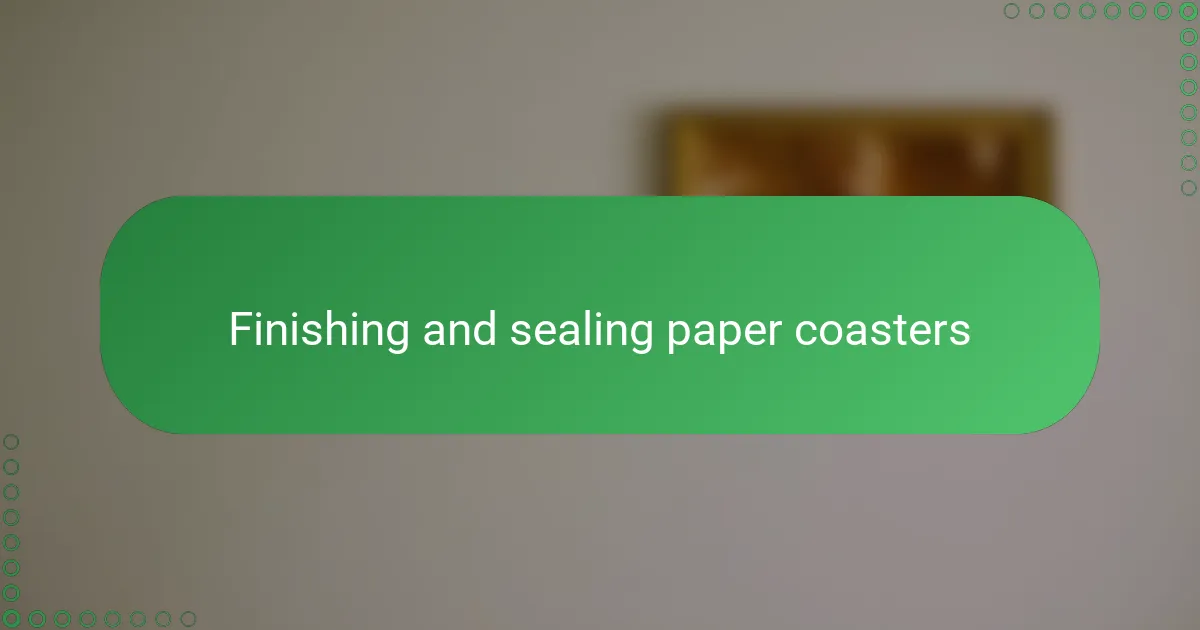
Finishing and sealing paper coasters
Sealing my coasters is always a moment of gentle anticipation. Applying a clear varnish or a waterproof spray not only protects the paper but also enhances the colors, bringing the collage to life. Have you ever noticed how that glossy finish transforms your work from delicate paper art into sturdy, usable pieces?
I learned early on that skipping this step invites disaster—spills can easily ruin hours of careful work. Once, I forgot to seal a batch, and a stray coffee ring smeared through the images, teaching me the value of that protective layer the hard way. Doesn’t it feel rewarding when a simple coat of sealant makes your coaster both beautiful and practical?
Beyond protection, finishing the edges with a light sanding or trimming can polish the look and prevent peeling. I’ve found that these small touches add a professionalism that makes my homemade coasters look like something you’d find in a boutique shop. Have you tried sealing with multiple thin coats? It really builds up durability without hiding the charm of the paper.
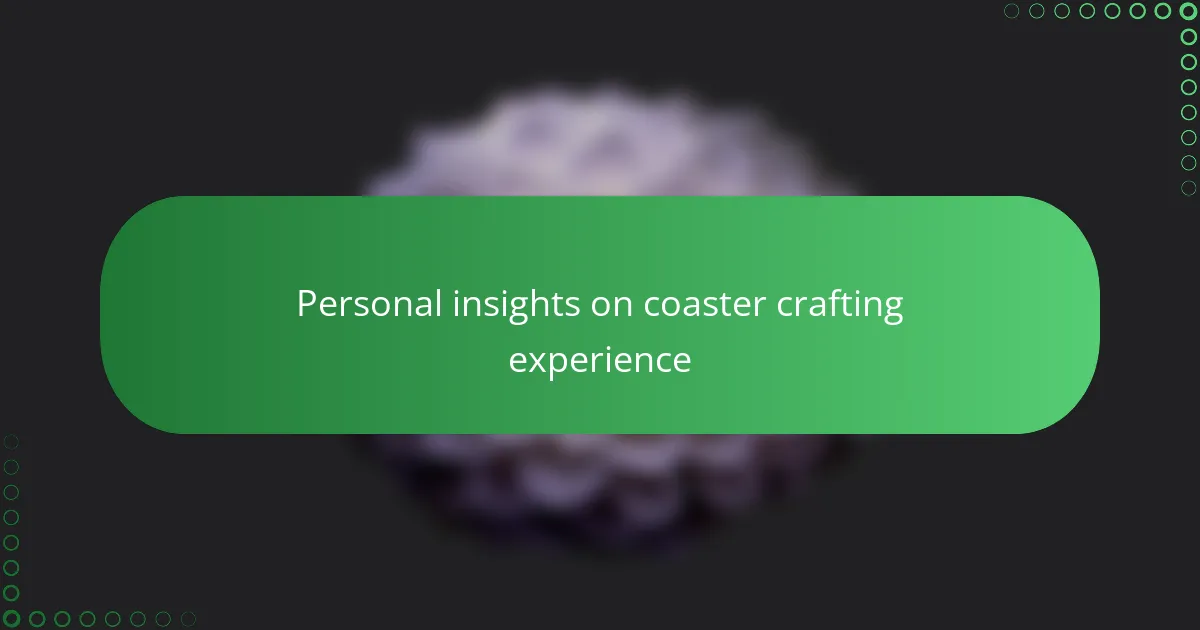
Personal insights on coaster crafting experience
Working on these coasters taught me to appreciate how patience transforms something simple into something special. I remember sitting with my clippings spread out, hesitating to glue because I wanted each piece just right. Have you ever found yourself caught between rushing and perfecting? That delicate balance makes the craft feel almost meditative to me.
I also realized how much joy comes from embracing little imperfections in the design. One coaster had a slightly misaligned image that I almost scrapped, but in the end, it gave the piece unexpected character. Isn’t it fascinating how those tiny flaws make handmade things so uniquely charming?
Sometimes, it’s the quiet moments during the sealing process that resonate most. Watching the last layer of varnish dry, knowing the coaster can now safely hold a warm cup, evokes a surprising sense of accomplishment. Have you noticed how completing a project like this gives you a small but meaningful boost?
